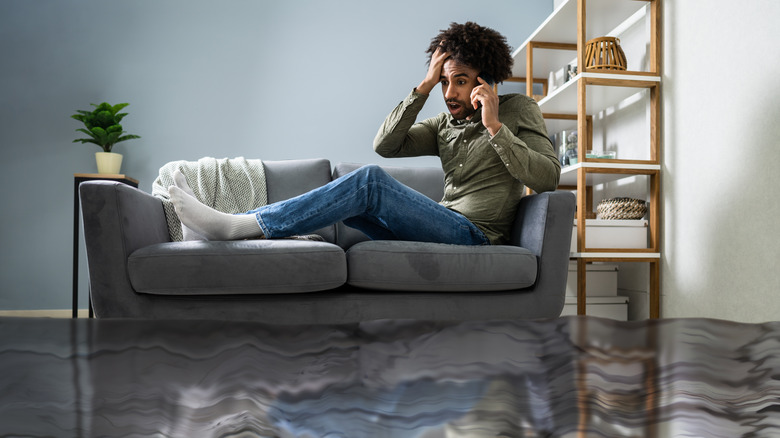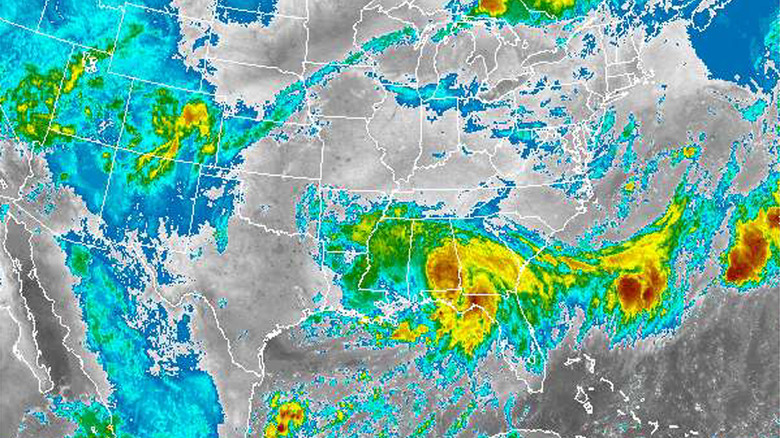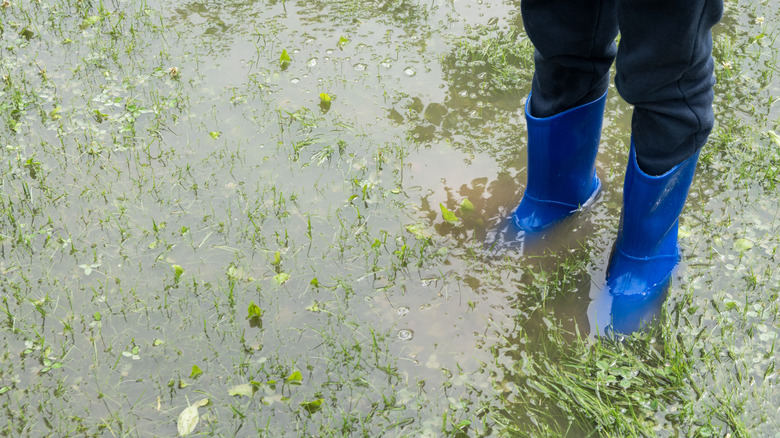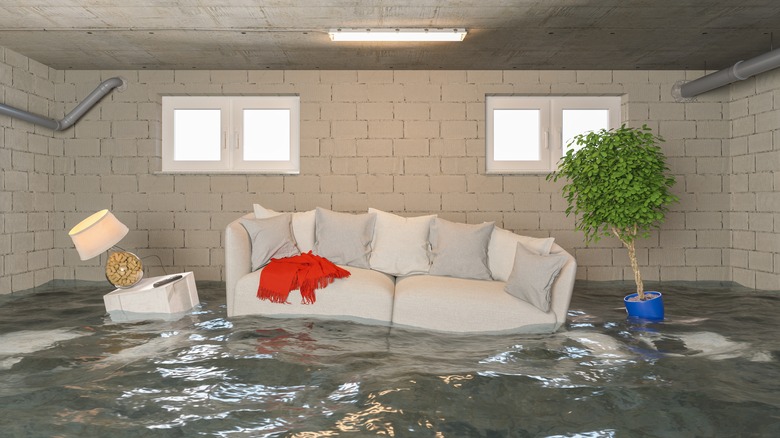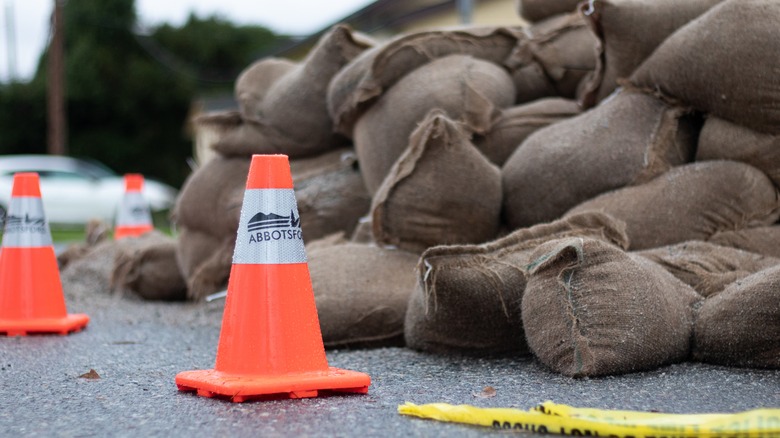How To Make Sure Your Home Is Safe From A Flood
According to NOAA National Severe Storms Laboratory, out of all the natural disasters that can take effect on your home, floods are the most commonly occurring and widespread. In fact, American Flood Coalition shows that nearly 14.6 million homes in the United States are at risk of flooding each year. Unfortunately, compared to other weather occurrences, floods are also responsible for the largest amount of death and injuries each year.
Floods cause the most danger and harm when they occur unexpectedly. This unexpected flood occurrence is known as a flash flood. NOAA National Severe Storms Laboratory informs that flash floods commonly occur in rather dense urban environments and are increasingly dangerous due to their speed and rapid development. Regardless of if a flood occurs unexpectedly or not, there are plenty of ways you take action now and protect your home from this unfortunate circumstance. Although we hope that an event like this never happens to you, here are the best ways to prepare and keep your home safe from a flood.
Evaluating the risk
The first step towards ensuring your home's safety during a flood is evaluating how prone your area is to flooding. The geological location of your state and the specific location within the immediate area you live in determines your home's risk of flooding on a yearly basis. According to Value Penguin, you can determine these risks by using FEMA's flood map. This flood map determines which of the four zones your home falls under, allowing you to actively prepare for the unfortunate and unexpected event of a flood.
The first zone you will notice on the map is the blue zone. This zone shows that the area has a 1% chance of flooding, which, on a larger scale, means that within 100 years, the area will be flooded at least once. The orange zone only shows a 0.2% chance of flooding, which means the area is at risk at least once every 500 years. Unlike the first two zones, the yellow zone is unknown. If you find an area positioned within a yellow zone, you will need to search the flood history of that specific area before determining the risk of the area flooding regularly. Finally, the blue and red striped zone is very prone to flooding. These areas are usually next to bodies of water that cause flooding regularly. If you live in one of these areas, it is highly advised to either thoroughly prepare and protect your home from flood water or relocate altogether.
Flood insurance
Especially if you live in an area that tends to flood on a regular basis, it is highly advised to invest in flood insurance for your home. According to Business Insider, flood insurance provides you with financial support to revive the condition of your home after a flood.
Business Insider explains that depending on the extent of the flood and the precautions you have taken to prevent flood water from affecting your home, the damage this natural disaster can cause to your home can be very expensive to repair. Take, for example, a two-story home that equals a total of 2,500 square feet of living space. With an average of 4 feet of flooding, you can face nearly $100,000 worth of damages. Without flood insurance, these expenses can cause a rather heavy financial burden. Although most people receive a $5,000 grant from disaster assistance, it is not nearly enough to take the financial weight off your back. Flood insurance, however, can provide you with at least $40,000 for your repairs, which covers almost half of the damage expenses. Keep in mind, however, that to have flood insurance, you must pay a monthly fee; therefore, it's only advised to invest in flood insurance if your area is rather prone to flooding.
Outside the home
Regardless of how prone your home location is to flooding, it's still important to prepare your home for any unexpected circumstances. Starting outside of your home, you need to first ensure your runoff and drainage systems are functioning properly. FEMA insists that your gutters, downspouts, and splash pads should all be cleaned and checked on a regular basis to ensure they will function properly when they are most needed. Pinpointing spots on your property that lack drainage is also important to note so they can be adjusted before any major flooding can occur.
Depending on your home, some of your utilities may also be positioned outside of your home. If this is the case, these utilities, which are worth thousands of dollars, should also be adjusted to ensure their safety during a possible flood. FEMA recommends adjusting the elevation of the equipment with a platform or pedestal that raises it at least 1 foot off the ground. Similarly, if you live in an area that is prone to high amounts of flooding, your outdoor fuel tank should also be elevated to prevent water from entering the tank. If you're area only experiences light flooding, however, it's better to focus on anchoring your fuel tank to the ground or a heavy slab of concrete due to its tendency to easily flow away with the flood water and cause damage to other houses and buildings.
Inside the home
After the outside of your home has undergone the proper changes and adjustments, FEMA claims that there are also a number of techniques you can use inside of your home to further protect it from an unexpected flood. First and foremost, you can seal the interior foundation and basement walls of your home. True Value claims that applying a simple sealant to your basement provides the foundation of your home with a watertight surface that both stops leaks and holds back water flow.
Installing flood vents and sump pumps are also useful tools to have in the event of a flood. Flood Vent explains that flood vents are a great way to reduce the amount of pressure on your house that occurs and causes damage during a flood. To protect important items within your household, it is also highly recommended to elevate them. For example, MUO claims that keeping your electronic devices on elevated surfaces reduces the risk of them being harmed during an unexpected flood. Similar to an outdoor fuel tank, an indoor fuel tank should also be anchored into its position to avoid further damage to the area if it happens to shift with flood water. Finally, FEMA also mentions that a flood alert system can be installed to alert you when a flood is threatening your home.
Prior preparations
Although some floods, like flash floods, can not be predicted, many are as predictable as the weather. If you happen to have time to prepare for an incoming flood, there are a variety of things FEMA recommends doing in preparation. Before anything else, you should turn on any flood protection devices you may have within your home, for example, a sump pump. Along with turning on these items, you should turn off your home electricity, which can be done at your home's circuit breaker panel.
Once your electricity is off, and your flood devices are running, you can collect any valuables and important documents to store in a safe, water-tight position. FEMA then recommends elevating any electronic devices you may have around your home to prevent them from being harmed by potential water damage. If you have time, it may also be useful to clear any draining systems you have around your home. Finally, set up any temporary flood barriers that are available to you, like sandbags, flood walls, and flood skirts.
